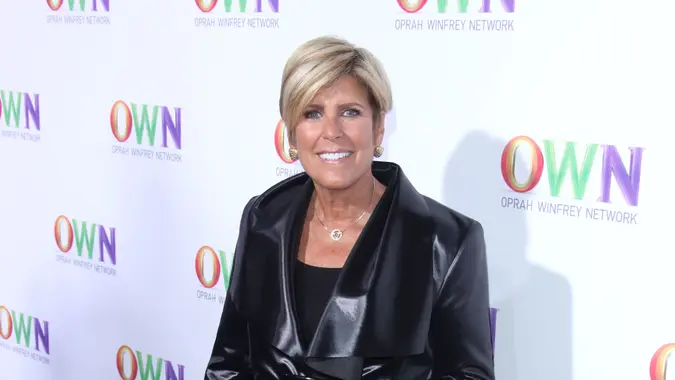7 Things the Lower-Middle Class Can’t Afford in 2025

Commitment to Our Readers
GOBankingRates' editorial team is committed to bringing you unbiased reviews and information. We use data-driven methodologies to evaluate financial products and services - our reviews and ratings are not influenced by advertisers. You can read more about our editorial guidelines and our products and services review methodology.

20 Years
Helping You Live Richer

Reviewed
by Experts

Trusted by
Millions of Readers
As the increasing costs continue to outpace your monthly budget, you might be noticing that you are generally priced out of purchases your parents and previous generations were able to make at your age.
So far this year, the rising cost of living from previous years has become exponentially more challenging for those who fall into the category of a lower-middle-income class. Inflation and stagnant wages have created an environment where many purchases are now out of reach for this demographic, especially when they are living paycheck to paycheck.
It doesn’t matter whether you have a college degree or some degree of economic security, when it comes to being American middle-class or lower-middle class, your money simply doesn’t go as far as it used to. Here’s a look at some big-ticket purchases that will likely be unattainable for many lower-middle-class families in 2025.
Owning a Home
For decades, homeownership was considered the epitome of the American dream and the ultimate symbol of success. The path was simple — you got a college education, got married, bought a house and then had a few kids.
However, that illusion vanishes pretty quickly when your income is pitted against today’s skyrocketing housing costs. CNN puts the median home price for previously owned homes at $407,600 as of the end of last year — a 5.7% increase from the previous year.
“This surge puts upward pressure on mortgage payments and forces some families out of the housing market entirely,” said Matthew R. Silverhardt, a certified financial planner (CFP) and private wealth advisor at Claire Reid Wealth Advisory.
Every sign indicates this inflation trend for housing markets will continue into 2025. As household incomes aren’t on the same upward trajectory, lower-, middle- and upper-class families alike have to make adjustments, with big expenses like putting a down payment on a house moving slightly out of reach in 2025.
Owning a Car
Outside of debt-inducing higher education loans and rising healthcare costs, the basic cost of getting around your city has also gone up significantly.
Car ownership has transformed into a luxury for many in the lower-middle class, with some having no other option than to lease a vehicle due to the rise in auto prices. This hardship is compounded by the fact that many American cities lack comprehensive public transit.
“Car ownership, a large aspect of American life, is becoming elusive for the middle class,” Silverhardt said. “With the average cost of a new car hitting $47,000 and disruptions in the supply chain causing a spike in used car prices, coupled with higher gas prices, the financial burden of maintaining personal transportation is real.”
Expensive Vacations
Speaking of transportation, going on vacation has also become a distant dream for the lower-middle class. Even a modest vacation can easily run into the thousands, and when essential costs are already stretching budgets thin, vacations are on the chopping block.
“The cost of travel and accommodations has seen a notable increase, making vacations less affordable,” said Taylor Kovar, another CFP and the founder at Kovar Wealth Management.
“Airfare and hotel prices have risen due to various factors, including increased demand and higher operational costs. The overall increase makes it challenging for the lower-middle class to budget for holidays.”
While budget-conscious travel is still possible, extravagant vacations are likely a thing of the past for this demographic.
Gym Memberships
Those in the lower-middle class are also facing setbacks when it comes to prioritizing their health and wellness. While once considered a basic necessity and an affordable way to stay active, gym memberships have become a luxury for this demographic.
The continuous price hikes pose a significant obstacle for middle-class individuals looking to break a sweat without breaking the bank.
Education and Child Care
“The costs associated with education and childcare have been steadily increasing, making it more challenging for the lower-middle class to afford quality education for their children or childcare services,” Kovar said. “This is particularly impactful as these costs often take up a significant portion of the household budget.”
This is keeping many in the lower-middle class from affording college for themselves or their children. The rising costs of childcare are also affecting families’ capacity to work and earn an income while ensuring proper care for their children.
Basic Necessities
As inflation has made everyday expenses increasingly unaffordable for the lower-middle class, stocking up on essentials is more challenging than ever with a limited disposable income. In 2025, scraping by will become an even more vigorous endeavor.
“Groceries, in particular, saw a staggering 12.8% year-over-year increase in cost [from 2022 to 2023], compelling families to make difficult choices such as cutting back on essentials or compromising on nutritional value,” Silverhardt said.
Healthcare
Despite various healthcare reforms, the cost of healthcare continues to be a significant burden for the lower-middle class. This includes not just insurance premiums, but also out-of-pocket costs for medical care and prescriptions.
As of last year, “The 2023 Milliman Medical Index reports that the cost for a hypothetical family of four covered by a PPO plan Management LLC through their employer is $31,065,” said Jeff Rose, a CFP and the founder at Alliance Wealth.
“This reflects a growth of about 5.6% from 2022. Factors contributing to this increase include staffing shortages and supply chain challenges. This rise in healthcare expenses is significant and adds to the financial strain on families, particularly those in the lower-middle class,” added Rose.
Final Take To GO
The bottom line is that when even short-term expenses like basic necessities are on the financial fence of affordability, being able to achieve long-term goals like saving for retirement is much more difficult. If you are from a lower-middle-class household, navigating what you will and won’t be able to buy in 2025 will be even trickier.
Caitlyn Moorhead contributed to the reporting for this article.
 Written by
Written by  Edited by
Edited by 

























